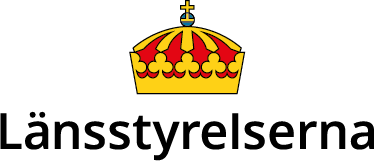Our animal welfare work
The County Administrative Board carry out animal welfare inspections to ensure compliance with the Animal Welfare Act, andAct and ensure that the animals have a comfortable life.
The Animal Welfare Act contains provisions on how animals should be kept and treated. These provisions are supplemented by the Animal Protection Ordinance, various regulations, and general advice. The Swedish Board of Agriculture has the overall responsibility for maintaining and developing animal welfare in Sweden. Their mission includes coordinating and guiding The County Administrative Board’s work.
Animal welfare in Sweden, Swedish Board of Agriculture (in Swedish) External link.
External link.
We check that the animals have a comfortable life
We carry out both normal inspections and inspections when we receive notification that an animal is being mistreated or abused. The normal inspections are mainly carried out on animals in agriculture.
Normal inspections
Normal inspections are so called routine checks, which we perform at regular intervals according to a risk rating or on randomly selected farms and businesses. When we perform normal inspections, we base them on a checklist for animal species that applies to Sweden as a whole.
After the inspection we provide a summary for the animal owner. Within three weeks the animal keeper will receive a written inspection report including results based on the checklist and what was established verbally during the visit. The report also contains any requirements for action.
Notification inspection
A notification inspection is carried out when we receive a notification. The notifications are prioritised based on their urgency. We can both call the person keeping the animals or send them a letter. When necessary, we carry out an inspection at that location. The inspection follows a checklist based on the notification.
After the inspection we provide a summary for the animal owner. Within three weeks the animal keeper will receive a written inspection report including results based on the checklist and what was established verbally during the visit. The report also contains any requirements for action.
Shortcomings in animal husbandry
If we’ve noticed shortcomings at the inspection, a complete inspection on site may be necessary. If the shortcomings are minor, we may follow up by having the animal keeper submit photographs or certificates.
In the case of more serious or recurring shortcomings, we can decide that they must be corrected. The decision can be combined with a fine. We can also decide that the animal(s) should be cared for.
The County Administrative Board may decide that the animals must be taken into charge immediately if:
- the animals are abused and it’s considered hopeless that the shortcomings will be resolved,
- the owner of the animals is unknown or not reachable,
- we otherwise consider it necessary from an animal welfare point of view.
The County Administrative Board are responsible for the practical management of the animal that is taken into charge. In that case, we also decide what to do with the animal, for example whether it should be sold, or put down.
We also make decisions about animal bans, for example for people who have been convicted of cruelty to animals, or manifestly proved to be unfit to care for animals.
Violations of the Animal Welfare Act are handled by the District Court. If you are convicted of a crime, you may get a fine or imprisonment for a maximum of two years.
If you are a farmer and have applied for any kind of agricultural grant, you may receive less money in support of your business if you do not comply with animal welfare regulations.
Cross-compliance, Swedish Board of Agriculture External link.
External link.
Costs for inspection visits
Normally, the inspection visit is free of charge. You may have to pay a fee if:
- we find shortcomings at a notification visit
- we find shortcomings at a normal inspection and follow-up visits are needed.
The hourly rate is SEK 910 and is charged by every half an hour. The fee covers time for traveling, inspection preparations, time to carry out the inspection, and any administrative follow-up work.
